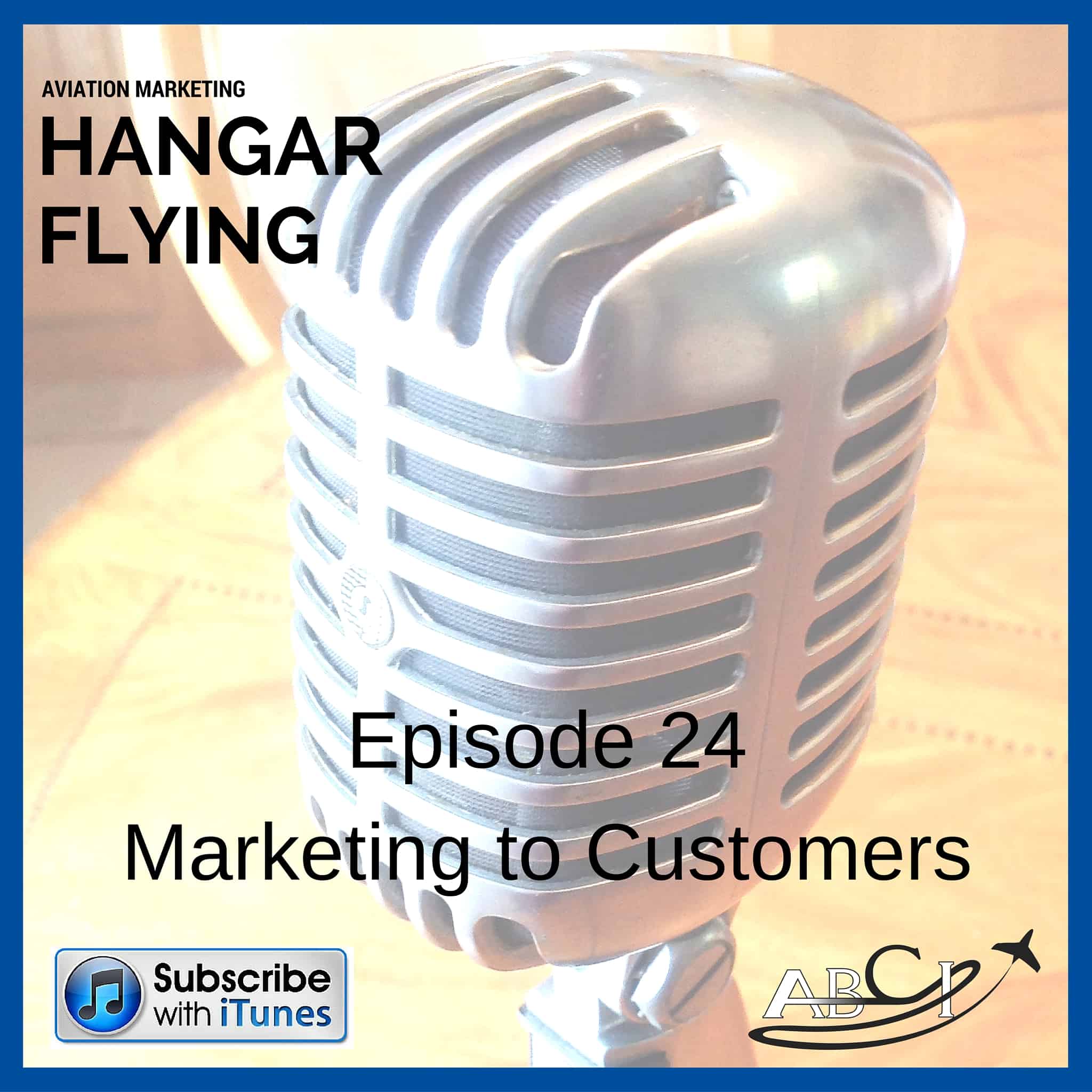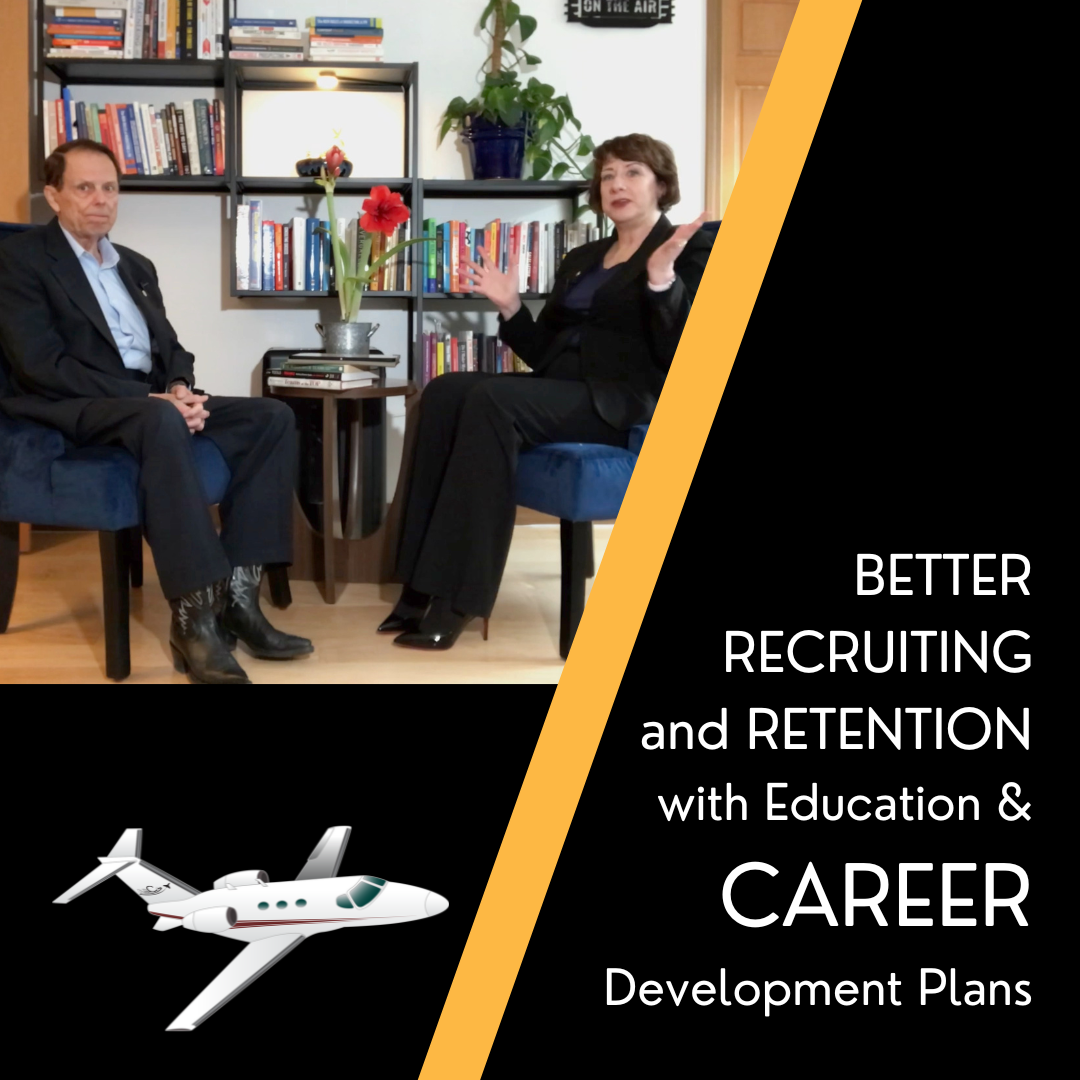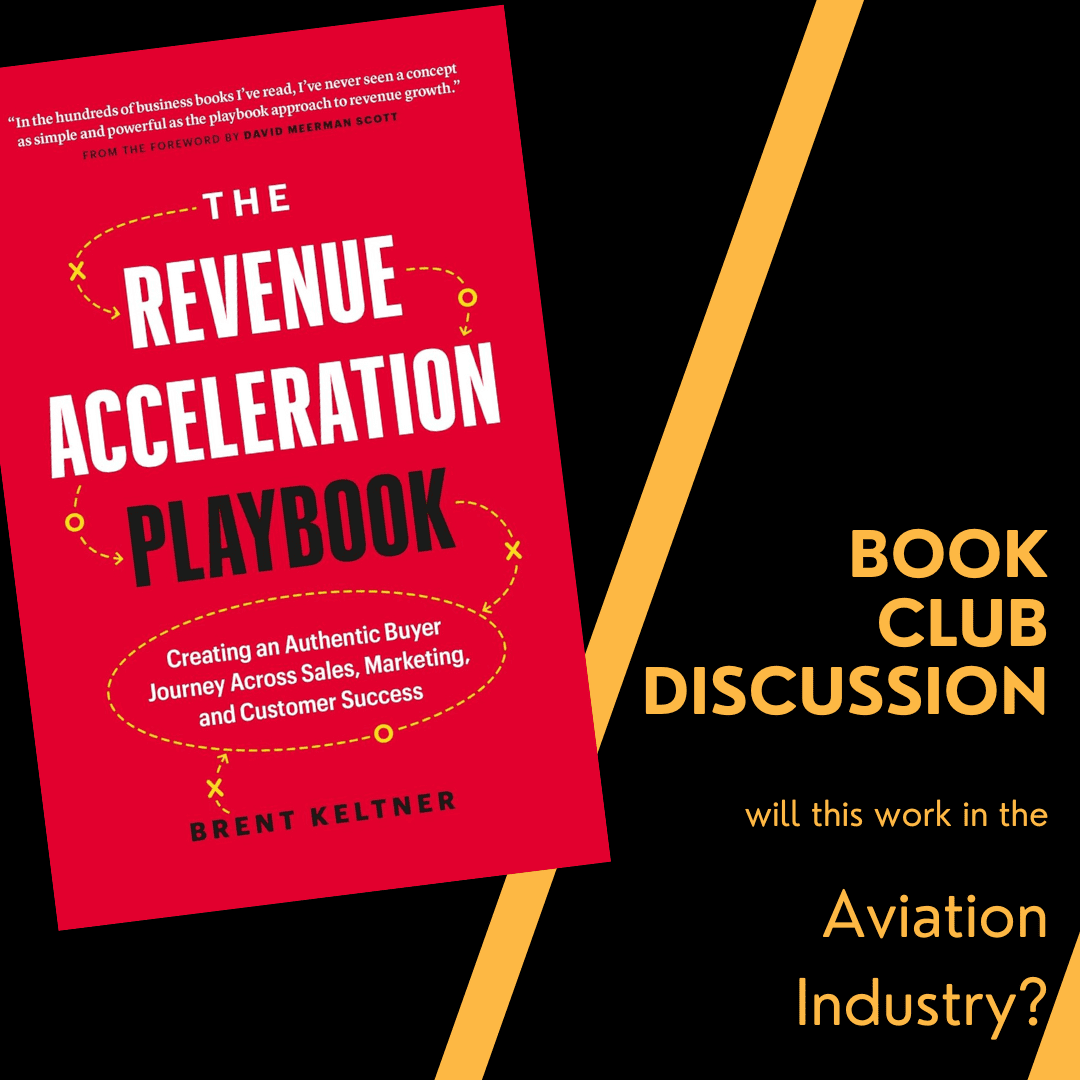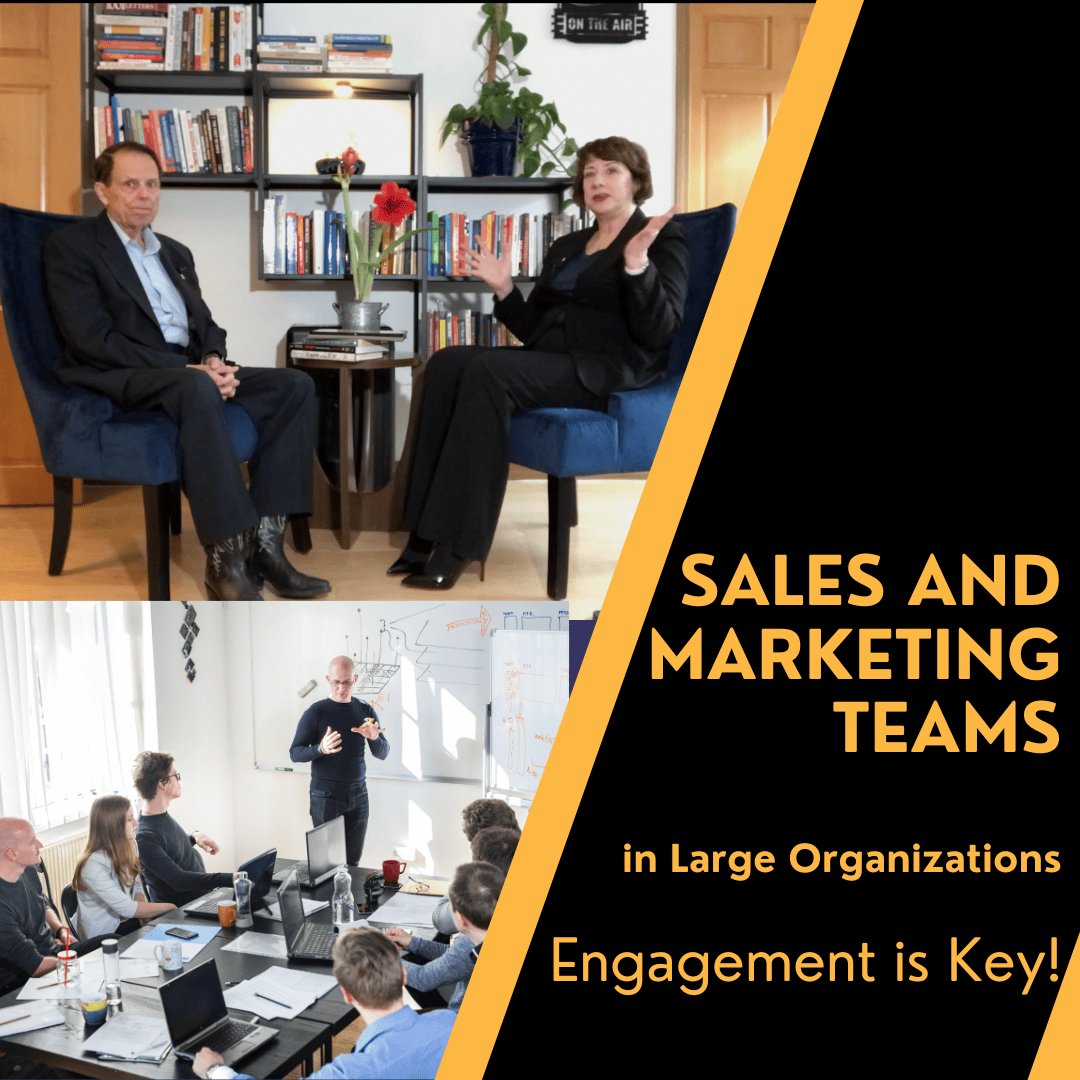
Many marketers make the mistake of focusing almost exclusively on finding new customers.
What is absolutely crazy about this is that most aviation companies acknowledge that more than half of all of their business comes from referrrals, word of mouth and repeat customers.
Business owners report on surveys that they have no money left over in their marketing budgets to create any kind of marketing materials or referral programs.
My question – why on Earth would you spend ZERO time and money on something that brings in more than half of your business?
John and I discuss the collective insanity in this week’s episode.
Transcript – Marketing to Current Customers (Not Just Prospects!)
[MUSIC]Narrator: You’re listening to aviation marketing Hangar Flying, the community for the best sales and marketing professionals in the aviation industry. Your hosts, John and Paula Williams, are your sales and marketing test pilots. They take the risks for you, ensure strategies, relevant examples, hacks, and how-tos. Be sure to subscribe on iTunes, so you won’t miss a thing.
Paula Williams: Welcome to aviation marketing Hanger Flying episode number 24. So you’ve made a sale, what’s next? This is actually phase three in what we call our long cycle marketing. Phase one is advertising and prospecting. Phase two Is building credibility and closing the sale. And then phase three is resales, recaptures, and referrals, and we’ve always said that phase three is where the money is made in the aviation industry.
John Williams: Well, even if only you keep the customer. [LAUGH]
Paula Williams: Exactly, [LAUGH] that is absolutely true, because there is, in aviation especially since it’s such a long sales cycle, and since it is such a high trust industry, once you get a customer, you are a lot more likely to keep them long term, get referrals, resales, and recaptures from that same customer.
And, also, every customer in the aviation industry, it’s such a small world that they know lots of other people who would be great potential customers for you.
John Williams: Small world, yes, with respect to national or international. We have a lot of customers out there, but it’s small.
Paula Williams: They all know each other.
[LAUGH]John Williams: Or they know somebody that knows somebody that knows them.
Paula Williams: Exactly, right. So it’s really important not just to make a sale. If you’re in retail or something like that, you could get away with selling a shoddy product, or at least you’re more likely to get away with selling a shoddy product, because there’s such a large potential audience for you.
In aviation, a lot of our customers have very specific products where their universe to customers is pretty small, so you need to make sure that every one of those people is happy. And even if your product is not a perfect fit for them, at least they understand that it’s a high quality product, and they understand how to give you great referrals.
So some of the ways that you can do that are with what we call a customer welcome package. And we’ve talked about this in a lot of our materials, but just to briefly go over what that is, as soon as someone spends money with you, they tend to have one or two reactions.
Either they’re really excited about your product, or they feel like, wow, I just spent a lot of money. I hope I made a good decision. And that anxiety sets in right after they write the check or right after their credit card is charged.
John Williams: Buyer’s remorse.
Paula Williams: Buyer’s remorse.
So you need to have an answer to that buyer’s remorse. Or you need to have a counter to that, and the best way to do that is to put something in their hands. And even if you sell something like insurance or a service that isn’t tangible, there’s a psychological reassurance that comes when you have spent money and somebody hands you something, [LAUGH] something physical.
John Williams: Well, yes. And not only that, but they know that you haven’t forgotten them, because you have their money now.
Paula Williams: Exactly, you haven’t just disappeared into the night. And so you give them a package. And what this package should include are some information things, like of course their warranty information, product brochures, explaining here’s the details of what you just bought.
A lot of times, they bought it for one particular benefit but then if you can tell them about the rest of the benefits of that product, they can read up about it and understand some of the benefits of what they’ve just purchased. Other things that you can include in there are accessories.
I know when you bought the 172s, you got a nice little package with a key ring, and some cleaning products, and all kinds of stuff like that.
John Williams: Yes, they did quite out of the way, but they should have. I mean, I spent a
Paula Williams: Ton of money. [LAUGH]
John Williams: A lot of money for a small airplane.
Paula Williams: Exactly, and again, this needs to be in proportion. So someone has bought a $9.99 software download, then maybe your welcome package is just an email explaining here’s the benefits of what you just purchased. But if they spent hundreds of dollars, then it should be something larger.
If they spent thousands of dollars, it should be larger than that. If they spent tens of thousands of dollars, it should be something really nice, that recognizes the fact that they trusted you with their money and have made that purchase, right?
John Williams: An example, I know an aircraft broker that when he delivers an aircraft to wherever the client wants it, he fills the tank.
Paula Williams: That’s nice. That’s very thoughtful, and it’s considerate. So you do want to put some thought into that. What are people going to need so that they can immediately use your product? And the obvious answer to that, if you’ve ever opened a package on Christmas morning, and it not having batteries in it [LAUGH] .
So if you put some thought into what does your customer need in order to thoroughly enjoy your product the first time they use it, you wanna make sure that they have all the information, accessories, batteries, any consumable products, anything like that, that they might need in order to make the most of that experience so that that first experience with your product is a good one, right?
John Williams: Yes.
Paula Williams: All right, cool. Another thing that you should do is a follow up call within two to three days of making a purchase, and that can be depending on the type of product. If it’s software, especially, they’re going to probably run into some questions the first time they use it, or if it’s a complex product, they’re gonna run into some problems.
So some people will schedule, the first time you use it, let’s walk through it with you and get on Skype or whatever. And if it’s an aircraft component, you may wanna do this over Skype or GoToMeeting on your iPhone and say, show me what you’re doing when you installed this product, and I’ll talk you through it.
So once again, you’re making their first experience with your product a good one, and there’s the technology available to do that really well nowadays.
John Williams: Yes.
Paula Williams: Right, and if they do it wrong-
John Williams: [LAUGH]
Paula Williams: ll If they use your product wrong, they’re not going to blame that on themselves.
They’re gonna blame it on you, right?
John Williams: Every time.
Paula Williams: Every time. [LAUGH] Okay, so the service follow up calls, you can schedule those when you draw up the paperwork for the purchase process and say, when do you expect to install this or use it for the first time?
Let’s set up a GoToMeeting with our service tech, make sure that everything goes well and answer your questions right away so that you don’t get frustrated on telling everybody how awful our product is when you’re actually putting it in backwards, or whatever the situation is. Okay, another thing you can do is a customer satisfaction survey.
It’s an easy way to capture problems quickly right after the purchase and also solicit some information about how your sales guys did and see how that sales process went for them. Was it too much information, too little information? Did we drive you crazy? Did they explain the product appropriately at different stages of the sales process, and so on?
John Williams: Just don’t overdo it.
Paula Williams: Right, you don’t like filling out surveys.
John Williams: I don’t mind a survey once in a while, but when you get one every other day.
Paula Williams: Mm-hm.
John Williams: That’s not a good thing.
Paula Williams: Yeah, totally. But right after you’ve made a purchase, is that a time when you’d be?
John Williams: Sure, that’s fine. Well, not right after. Give me some time to find out if the product is what I thought it was going to be.
Paula Williams: Okay.
John Williams: But then don’t send me one every other week for the rest of the month.
Paula Williams: [LAUGH] Totally understand. Okay, so-
John Williams: That happens.
Paula Williams: That’s true.
John Williams: From name brand companies.
Paula Williams: Yeah, they’ve gotten really survey happy in the last few months, I would say. A lot of companies have gotten really over the top with their surveys. But one survey, at some point, we wanna plan this pretty carefully depending on your product or service.
At what point are they likely to have some feedback for you that would be useful to you, and at what point are they the most likely to give you testimonials and referrals, which is really kind of what you’re fishing for with that survey?
John Williams: Without appearing to be fishing.
Paula Williams: Without appearing to be fishing, right? So is that a week after the purchase? Is that three weeks after the purchase? It really depends on the product, right?
John Williams: Exactly.
Paula Williams: Yeah, so probably the more complex the product, the more time you want to elapse before you send that survey out.
John Williams: Especially if I buy engine pre-heat products in August, don’t send me survey. [LAUGH]
Paula Williams: [LAUGH] How’s that working?
John Williams: Unless I’m in Alaska or somewhere, but if I’m in the States.
Paula Williams: So you wanna kinda time it as to how long do you think it’s gonna take for that person, too, and you could actually time this with your customer service follow up call.
So you do the customer service follow up call maybe three days after the purchase. You schedule that with the customer?
John Williams: Just put it in your CRM, and it will pop up automatically.
Paula Williams: Exactly, and then you schedule the survey to happen right after that customer service follow up request.
So, yeah, perfect. And in your CRM, you can automate all of this
John Williams: Of course.
Paula Williams: Which is wonderful. Okay.
John Williams: And you need to talk to us about a CRM, because there’s some new stuff on the market that is a lot less expensive that will do as an interim until you can afford the good stuff.
Paula Williams: The good stuff, yeah. The good stuff being Infusionsoft. And there are some CRMs on the market that we’ve been researching that we wouldn’t have recommended a year ago, but we might recommend now depending on your situation and what you really need done, and so on. So if you’re in the market for a CRM, and this is a good reason to get a CRM is to get your phase three down and working.
Talk to us about that. Okay, so we really wanna look at your phase three as a 90-day program. And the reason we do this, there’s a great book by Michael Watkins. He was in the Harvard Business Review, about your first 90 days, and I know this is completely irrelevant, but it works, right?
It’s your first 90 days in an executive position, is the book. And basically, what it’s about is people form an opinion about your confidence and everything else about you within about 90 days, and that really becomes solidified and hard to change after that. So in your first 90 days in an executive position, what you want to do is set some goals, figure out what success looks like to you, what success looks like you your boss, and how you’re gonna measure that.
And I think that’s a very legitimate way of looking at a new product sale as well. What does your customer consider successful use of your product or your service, and what does success look like, and how are you gonna measure that 90 days from now? So we do that with our customers in marketing.
And the reason we do that is because of that book, which has nothing to do with marketing. [LAUGH] But it’s a great, great book and completely irrelevant to the current situation. But I think that one section of it really explains a great mindset. You’re beginning a relationship, and you wanna look at that 90 days as a program of helping your customer succeed.
So what you can do is put together a 90-day program that could include a weekly tip, a tip of the week. It could include maybe a printed brochure every 30 days, a newsletter, something like that, that helps your customer get the most from your product and really know how to use it, really use all the features of it.
I know when we buy software, we often don’t use the whole thing. We buy it for one purpose, and we use it for one purpose, and we’re really not getting our money’s worth out of that software, unless we devote the time to really understand what else this could do.
John Williams: Or somebody writes this statement and say, did you know?
Paula Williams: [LAUGH] Did you know? That is a great subject line for an email or for these weekly tips. Did you know that this can also do or can solve this problem for you? So that’s a great way of doing that.
You also wanna set up those periodic check-ins. And again, you don’t want to drive people, like John, crazy. But you do want to set up, and you can negotiate this with your customer when you make the sale. Should I check in with you in 30 days and see how you’re doing?
What makes sense for this product, and what makes sense for this customer, depending on their idea of what does success look like, right? Would that drive you crazy?
John Williams: We’ll have to see.
Paula Williams: [LAUGH] We’ll have to see, okay.
John Williams: [LAUGH] Probably not if it’s timed right, and it has to be valid.
Paula Williams: Yeah, but I would say most aviation companies don’t do enough of this. Would you agree?
John Williams: Probably not.
Paula Williams: Yeah, the companies that are driving you crazy are-
John Williams: Not aviation, actually.
Paula Williams: Yeah, so I think there are people that go overboard on this. But I would say most of the companies who are our clients, or who are listening to this podcast, are not guilty of going too far on their phase three.
If anything, you’re not going far enough.
John Williams: Exactly.
Paula Williams: Okay, right. So in The Referral Engine, which is John Jantsch book, that’s the book that we’re using in our book club this month, when we talk about phase three, he has a thing called the customer life cycle, and I think this is a really good one.
Most people just think of the customer life cycle as trying to sell and sold, and end of story, right?
John Williams: Which is a bad way to look at it.
Paula Williams: So his customer life cycle is actually six phases. It’s a lot longer than that. It is no, like, trust, buy, repeat, refer, right?
So buy is not even, well, it’s a little more than half way through his sales cycle. So first of all, they know that you exist, and then you give them some reason to like or appreciate your product, some of the benefits and things that it can do. And then trust is the thing that it’s probably the hardest where they believe that you can actually do what you say you can do, and you can do that.
We’ve talked about building trust with testimonials, and statistics, and referrals, and references, other kinds of things, case studies, and so on, guarantees. And then the purchase process, repeat and refer, is what we’re talking about in phase three. So repeat sales, depending in what they’re buying, is usually a length of time that you can estimate.
As an example, some of our brokers, depending on what type of aircraft they sell, plan on, what three or four years between aircraft purchases. So they know that if someone purchases an aircraft from them in 2012, they’re gonna be back in the market in 2016. So you can predict some of these things based on the statistics of what’s happened in your business and in your industry before.
So those repeat sales, you really wanna be lined up for when you get to that window. And refer, the whole book is about referrals, which is great, because a lot of our clients get 50% or more of their business from referrals, but they treat them almost as accidents.
You really wanna make sure that you’ve got a program in place to incentivize those referrals. Treat them really well. Make sure that everybody is really secure with the process and feels good about giving you referrals and knows that you’re going to not embarrass them by doing something inappropriate with the people that they refer or disappointing the people that they refer most specifically, right?
John Williams: Yes.
Paula Williams: So what did it take to get you to refer somebody to a company? I know you refer a lot to some companies. What is it about them?
John Williams: Mostly, with me, it’s just bumping into the right individual that I already have knowledge of a product set that they would be interested in.
Paula Williams: Right, exactly.
John Williams: And particularly if I’ve used it.
Paula Williams: Yeah, I don’t think you’ve ever recommended something that you haven’t used.
John Williams: No, I can tell them I haven’t used it, it looks like it sounds good, but you know. But if I’ve used it and it’s worked and worked well, then I will refer.
Matter of fact, I can go out of my way and tell people that I haven’t considered it even that they should consider.
Paula Williams: Exactly.
John Williams: Even if they’ve not heard of it. I’ll think of something here before we’re done probably, but there’s one that I have been referring, just I don’t remember what it was, but enough for now.
Paula Williams: Exactly, so I know you refer a lot to American Express, Legend Solar. I can’t think of anybody in aviation, but what is it about those companies that make you comfortable telling people about them?
John Williams: Well, they back up what they say.
Paula Williams: So a good guarantee that they actually-
John Williams: They go beyond that. And in a lot of cases with American Express, you don’t even have to call them, and they’ll take care of possible fraud on the card and call you instead. Legend Solar, if you have a hint of an issue, one phone call, and if they can’t figure it out, they’ll have somebody out within a day or so.
Paula Williams: Exactly, and I think that’s actually a really good kind of an object lesson is Legend Solar installed some solar panels on our house, and they weren’t working properly. So it was an imperfect first experience, but they came out and fixed it and made you happy.
John Williams: Well, they actually,
John Williams: Monitor the functionality of each panel 24 hours a day. So when something is not up to speed, and then they analyze, because they predict how much you should produce over years time, and they’ll analyze it along the way. And if you don’t, they’ll either come out and add more panels or refund some money.
Paula Williams: Exactly, and so it was in imperfect first experience, but they fixed it. So a lot of people think, well, if I screw up with a customer, then forget the whole idea. I’m not gonna use them as a referral source, not true. You can turn that around, and in fact, it’s almost more impressive if you’ve turned things around, and they have a good experience with making things right.
John Williams: Yes.
Paula Williams: So some of the people that [LAUGH] don’t go perfectly, some of our customers that have been the hardest to please have turned out to be our best referral sources, because we didn’t give up on them, and we made things work under circumstances that were less than ideal.
So I think that is a great takeaway as well. So key takeaways from this episode, have a customer welcome package of some kind, even if you have the digital product. Use a digital customer welcome package, [LAUGH] but something tangible almost always works better, depending on what you’re selling.
Have a 90-day program that includes things like service follow up calls, surveys, testimonial requests, referral requests, tip of the week, tip of the month, periodic check-ins, things like that. And just plan those first 90 days to have some definition of success, and make sure that you meet that, and make sure that your customer knows that [LAUGH] you meet that and has the same idea of what that is and agrees to what that should be.
So if you do all of those things, you’re really gonna be a lot more profitable, because as we’ve said, most of the money in aviation is in phase three, because most of our customers either have been customers in the past or were referred by customers we had before.
So small world, take advantage of the small world, right?
John Williams: Of course.
Paula Williams: Of course. So have a great week, and we’ll see you next time.
[MUSIC]}..





Leave A Comment